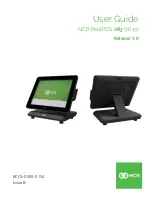
Version 20200601
No.
appropriate protective equipment.
When storing uninstalled modules outdoors for any period of time, always cover the modules and ensure that the glass
faces down on a soft flat surface to prevent water from collecting inside the module and causing damage to exposed connectors.
Purpose of this guide
Installation safety
Never disconnect electrical connections or unplug connectors while the circuit is under load.
Contact with electrically active parts of the modules, such as terminals, can result in burns, sparks and lethal shock whether
or not the module is connected.
Do not touch the PV module unnecessarily during installation. The glass surface and the frame may be hot; there is a risk of
burns and electric shock.
Do not work in the rain, snow or in windy conditions.
Avoid exposing cables and connectors to direct sunlight and scratches or cuts in order to prevent insulation degradation.
Use only insulated tools that are approved for working on electrical installations.
Keep children well away from the system while transporting and installing mechanical and electrical components.
Completely cover the module with an opaque material during installation to prevent electricity from being generated.
Do not wear metallic rings, watchbands, earrings, nose rings, lip rings or other metallic objects while installing or
troubleshooting photovoltaic systems.
Follow the safety regulations(e.g., safety rules for working on electrical power plant stations) of your regions and for all
other system components, including wires and cables, connectors, charging regulators, inverters, storage batteries, rechargeable
batteries, etc.
Under normal conditions, a photovoltaic module is likely to experience conditions that produce more current and/or
voltage than reported at standard test conditions. Accordingly, the values of Isc and Voc marked on this module should be
multiplied by a factor of 1.25 when determining component voltage ratings, conductor current ratings, minimum factor of fuse
sizes, and size of controls connected to the PV output.
Only use same connectors to connect modules to form a string, or connect to another device. Removing the connectors will
void the warranty.
Fire Safety
Consult your local authority for guidelines and requirements for building or structural fire safety.
Roof constructions and installations may affect the fire safety of a building; improper installation may create hazards in the
event of a fire.
Use components such as ground fault circuit breakers and fuses as required by local authority.
Do not use modules near equipment or in places where flammable gases may be generated.
The modules have been rated Fire Class C, and are suitable for mounting on to a Class A roof.
Product identification
Each module has three labels providing the following information:
1. Nameplate:
describes the product type; rated power, rated current, rated voltage, open circuit voltage, short circuit current,
all as measured under standard test conditions; weight, dimensions etc.; the maximum system voltage is 600 volts ,1000V or
1500 volts depending on the product family DC for UL standard and 1000 volts DC for IEC standard. Depending on the products
some are UL/IEC listed to 1 000 volts and 1500 V while other UL products are 600 volts. Check your nameplate or contact your
local representative for details.
2. Barcode:
each individual module has a unique serial number. The serial number has 18 digits. The 15th and the 16th digits are
the week code, and the 17th and the 18th digits are the year code. For example, STP xxxxxxxxxxxxxx2414 means the module was
assembled and tested in the 24th week of 2014. Each module has only one bar code. It is permanently attached to the interior of
the module and is visible from the top front of the module. This bar code is inserted prior to laminating.
Typical serial number barcode label
2
3





































